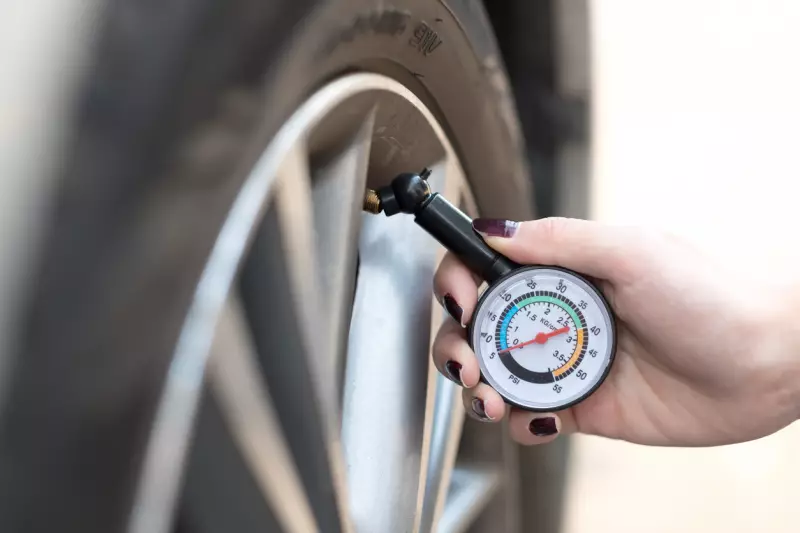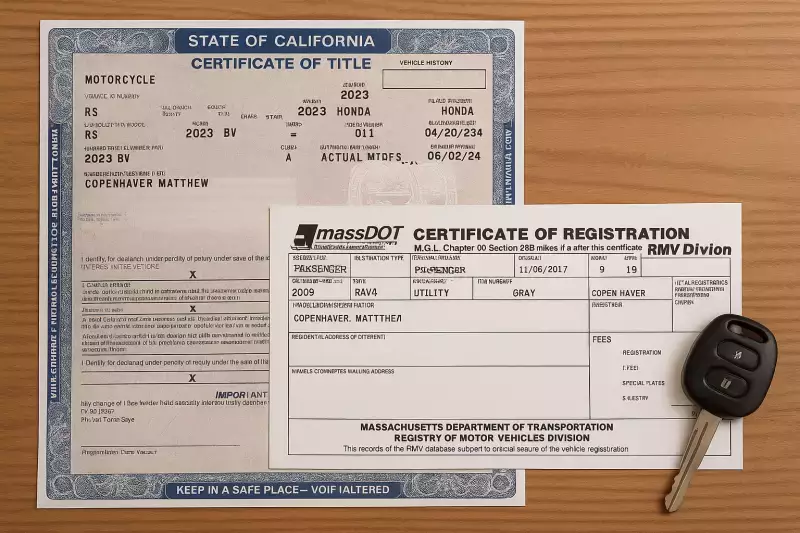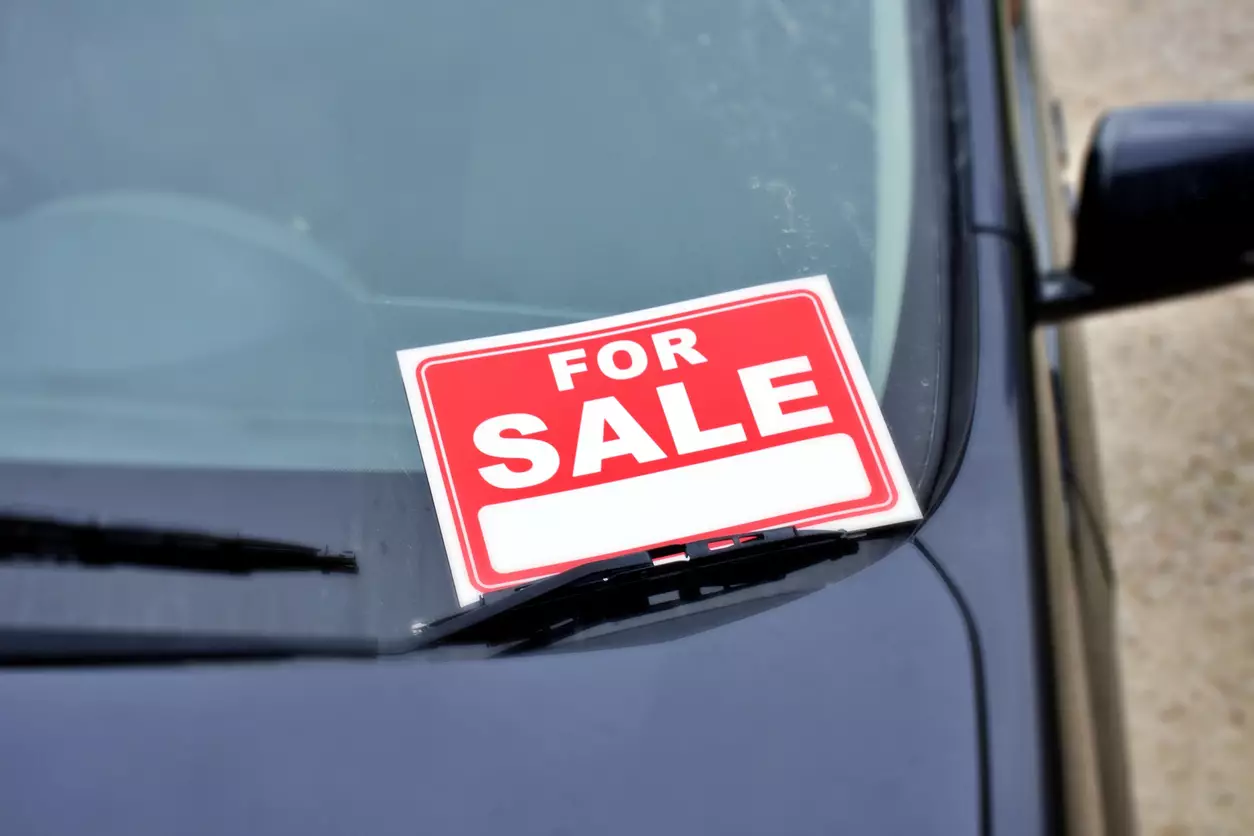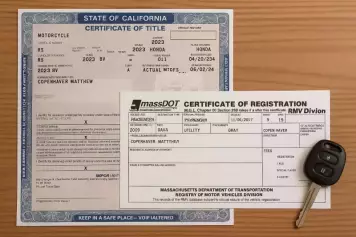Automotive tires have come a long way, from simple rubber compounds to innovations such as silica-reinforced treads for enhanced grip. Digital tires are the latest advancements, offering embedded sensors for gathering data and providing insights into road conditions. However, maintaining proper inflation remains critical to a tire's longevity.
Tires slowly lose air due to a few factors, such as leaks at the valve stem and the permeation of air through the rubber. Air pressures vary depending on the temperature of the day. Expect to lose about 1 to 2 PSI for every 10-degree drop in temperature because of too much air in the tires.
Air leaks also occur at the tire’s bead. To provide precise handling characteristics, steel wire is fashioned into hoops and then embedded into the sidewall of a tire. This design forms the bead, which ensures an airtight fit with the rim of the wheel.
What Happens If You Put Too Much Air In A Tire?
Over-filled tires can cause several harmful conditions to the tread, resulting in faster than normal wear. Proper inflation pressures are found on the driver’s side door jam about halfway down the post or in the owner’s manual. The pressures are etched on a plaque along with other important vehicle information.
Underinflated and overinflated tires are prone to the tread wearing quicker, reducing performance and fuel efficiency. Under-inflated tires are a serious condition when carrying excessive loads that do not support the weight of the vehicle. Too much air in the tires is a major cause of blowouts and tire failures.
Overinflated tires occur when the maximum amount of pressure (PSI) is exceeded. Overinflation causes several adverse effects, such as poor handling, irregular tread wear, and a harsh ride. The maximum amount of tire pressure is displayed on the side wall in small print near the bead; do not mistake this number as the recommended psi.
Is It Safe To Drive With Overinflated Tires?
Properly inflated tires will save money at the gas pump while providing a safe and enjoyable ride. Tires last longer if minimum and maximum pressures, such as 25 to 40 psi, are avoided.
A slightly overinflated tire (1 to 2 psi) is not likely to provide any problems. However, continually driving on severely overinflated tires will cause extreme difficulties.
- Steering and drive train issues may occur with too much air in the tires and the transfer of force from the tires to the suspension. Damage from potholes and other road hazards increases the pressure on tires, risking a blowout. Encountering road hazards with an overinflated tire makes the suspension less effective.
- In wet or rainy conditions, tire overinflation causes less contact patch area (rubber), impacting grip, handling, and overall stability. Maximum pressures cause the center of the tread to wear down faster than the edges, providing a much rougher ride and risk of a blowout.
- Overinflated tires have a distorted shape, making them stiffer than they should be and more susceptible to damage, especially in the center of the tread. A tire’s warranty can be voided if not maintained properly. 1) to keep a warranty valid, the original receipt must be kept. 2) Regular maintenance must be followed, such as tire rotation and proper inflation.
Any knowledgeable automotive expert and manufacturer recommends checking tire pressures regularly, at least once a month, after every other fill-up, and before any long trip. It is also recommended that tires should be rotated every 5000 TO 7500 miles.
Vehicle manufacturers give their buyers a basic routine maintenance schedule that should be followed to keep the vehicle safe and running efficiently. A full maintenance schedule is included in the owner’s manual and recommended tire pressures are located on the driver’s side door jam.
How To Let Air Out Of A Tire
After checking and finding too much air in the tire, the process is simple to let air out. If you are airing down a set of tires, make sure it is done near an air hose in case too much is left out.
- Make sure the car is on a flat surface, turned off, and the hand brake is applied.
- Twist off the cap from the valve stem and place it nearby.
- Check the current PSI with a pressure gauge to get a baseline.
- Use a small screwdriver and press the valve pin to release air in short bursts. You will hear air escaping from the tire.
- Periodically check the tire pressure to bring it in line with the manufacturer’s recommendation.
- Once all tires have been checked and properly inflated, recap the valve stem and make a note of the date.
If there is no air pressure gauge, a good metric to use when releasing air is about one second per PSI. With experience, a driver will be able to eyeball a tire and have a pretty good sense of whether there is too much or not enough air.
Always wait for tires to cool down before releasing air; never release air from a hot tire. Tires heat up when driving, causing the air pressure to rise. Unscrewing the valve cap on a hot tire may cause a blowout or other immediate damage.
TPMS (tire pressure monitoring systems) became standard on American-made automobiles in 2000 with the Tread Act. These systems use sensors in the valve stem to monitor pressure and will let drivers know whether a tire is underinflated or overinflated.
What Is The Safe PSI For Your Tires?

The correct tire pressures are designated by the automotive manufacturer and not the tire builder. Each manufacturer decides on the tire pressures that give drivers optimal performance and fuel economy.
Most passenger cars and trucks have a recommended psi (pounds per square inch), usually between 28 and 36. Properly inflated tires ensure your vehicle’s tread wear is even while providing a smooth and safe ride. Tire PSI is too high when the gauge reaches 40 PSI or more.
As a general guideline, keep tire pressures within a range of 10% of the manufacturer's recommendation. For example, if the recommended tire pressure is 35 PSI, drivers can inflate or deflate their tires between 31.5 PSI and 38.5 PSI. Over-inflated tires to within 5% to 10% is safe to drive as long as you do not exceed the maximum pressure listed near the tire bead.
How Do I Know If My Tires Are Over-Inflated?
Most automotive systems give their drivers signs signaling that something is wrong and should be checked. Tires are no different, offering plenty of communication on road conditions and performance.
What happens if you put too much air in the tire?
- Vehicles become much more challenging to control with unattended inflation issues. Less tread is hitting the road because the steering is lighter and less sensitive.
- Poor traction is enhanced due to less tread hitting the pavement. Less tread reduces grip, leading to skidding, especially in wet conditions, a classic sign of an overinflated tire. The center tread wears out faster than the edges, and therefore, the total vehicle's weight is borne by less rubber.
- The most dangerous consequence of overinflation is a tire blowout. The tread is stretched beyond its limits, making each tire more susceptible to potholes or the increased speed of driving.
Overinflated tires are dangerous, and each driver should be aware of the signs. Get in the habit of checking air pressure at least once a month to ensure the safety of your family.








![Best Sites to Check a Car’s History [2025 Review]](https://media.infopay.net/thumbnails/K8lMeG2QLjE46LPqZlmoi6SunKKdT5qvlaRZk6e1.webp)










![Best Sites to Check a Car’s History [2025 Review]](https://media.infopay.net/thumbnails/K8lMeG2QLjE46LPqZlmoi6SunKKdT5qvlaRZk6e1-w356.webp)
